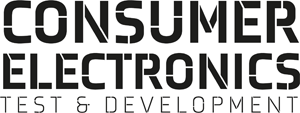In the fast-paced world of electronics, staying compliant with environmental regulations is as crucial as innovation itself.
Engineers then stand between the lab tests’ precision and product design. So let’s dive into mastering analytical testing and documentary review in order to develop a bulletproof compliance strategy.
Looking at the analytical advantage, gas chromatographymass spectrometry (GC-MS) is our go-to tool for sniffing restricted substances. It’s like having a microscope for molecules, perfect for spotting those pesky phthalates that RoHS regulators lose sleep over. So when EU REACH throws a new volatile compound on the restricted list, GC-MS is our first line of defence. X-ray fluorescence (XRF) is another fantastic instrument for detecting heavy metals like lead or cadmium. Additional tools for other chemicals, like inductively coupled plasma mass spectrometers (ICP-MS), will also help.
But let’s face it. Analytical testing isn’t all roses. It may be expensive, time-consuming, and sometimes feels like overkill. Think, for example, about the preparation of solid samples for GC-MS. That’s a job that can make even seasoned engineers break into a sweat. And don’t get me started on detecting chromium 6+, that’s a whole different ballgame requiring specific wet chemistry techniques.
Documentary dilemma
On the other hand, documentary review is the compliance equivalent of a software update – efficient and scalable. It’s about building a technical file using compliance data from your supply chain. The RoHS IEC 63000 standard is our playbook, guiding us on what documentation to collect. This approach shines when we deal with familiar suppliers and components in multiple products. It’s cost-effective and doesn’t require a PhD in chemistry to implement.
However, it’s not without its pitfalls. Have you ever tried getting RoHS documentation from a supplier who thinks it is a European fitness program? Yeah, it can often be that frustrating. Furthermore, the reliability of the gathered information is not always available.
Perfect compliance cocktail
So, how do we get the best of both worlds? Here’s a blueprint for a robust compliance strategy:
1. Standardize procedures: Develop a compliance toolkit with both documentary and analytical m methods. Consistency is key.
2. Supply chain audits: Regularly put your suppliers’ documentation under the microscope. If something smells fishy, it might be time for some analytical backup.
3. Risk assessment: Use an objective methodology to identify medium to high-risk materials for analytical testing.
4. Targeted testing: Use analytical testing as your secret weapon for high-risk materials, or when supplier docs look shakier than a prototype on a vibration table.
5. Build a comprehensive technical file: Think of it as your compliance Swiss Army knife – a mix of supplier declarations and test results.
6. Stay updated: Set up alerts for regulatory changes like you would for software updates. New restricted substance? Then it’s time to update the compliance.
7. Consult the experts: Sometimes, you need to call in the compliance equivalent of tech support. Don’t hesitate to seek expert advice for tricky situations.
By implementing such a management system, you’re creating a compliance firewall. It’s about using documentation for your day-to-day compliance checks while keeping analytical testing in your back pocket for when things get dicey.
Remember, in electronics design, environmental compliance isn’t just about ticking boxes. It’s about engineering products that are not only cutting-edge but also sustainable and safe. By mastering this balancing act between analytical precision and documentary efficiency, we’re not just meeting standards, we’re setting them.
So, the next time you face a compliance challenge, think like an engineer: analyze, document, and innovate.
This article first appeared in the September/October 2024 issue of Consumer Electronics Test & Development magazine. To read the full issue, click here.

